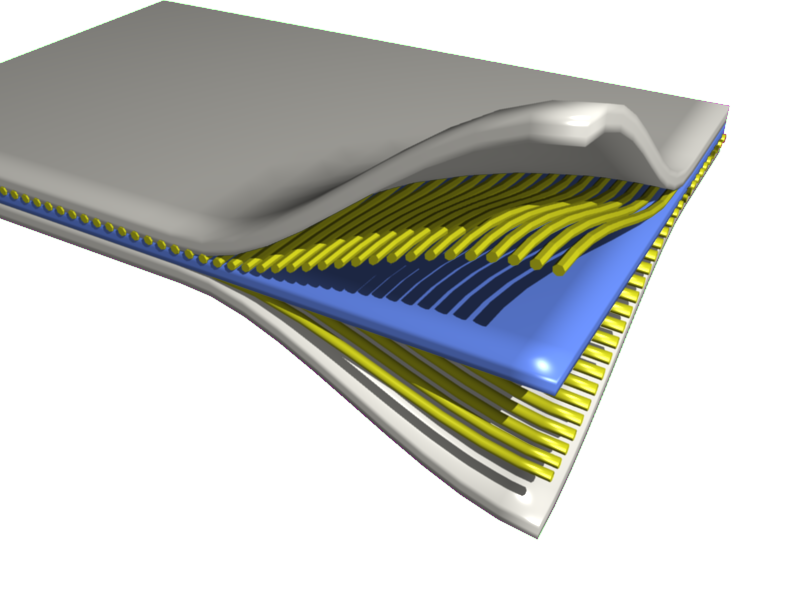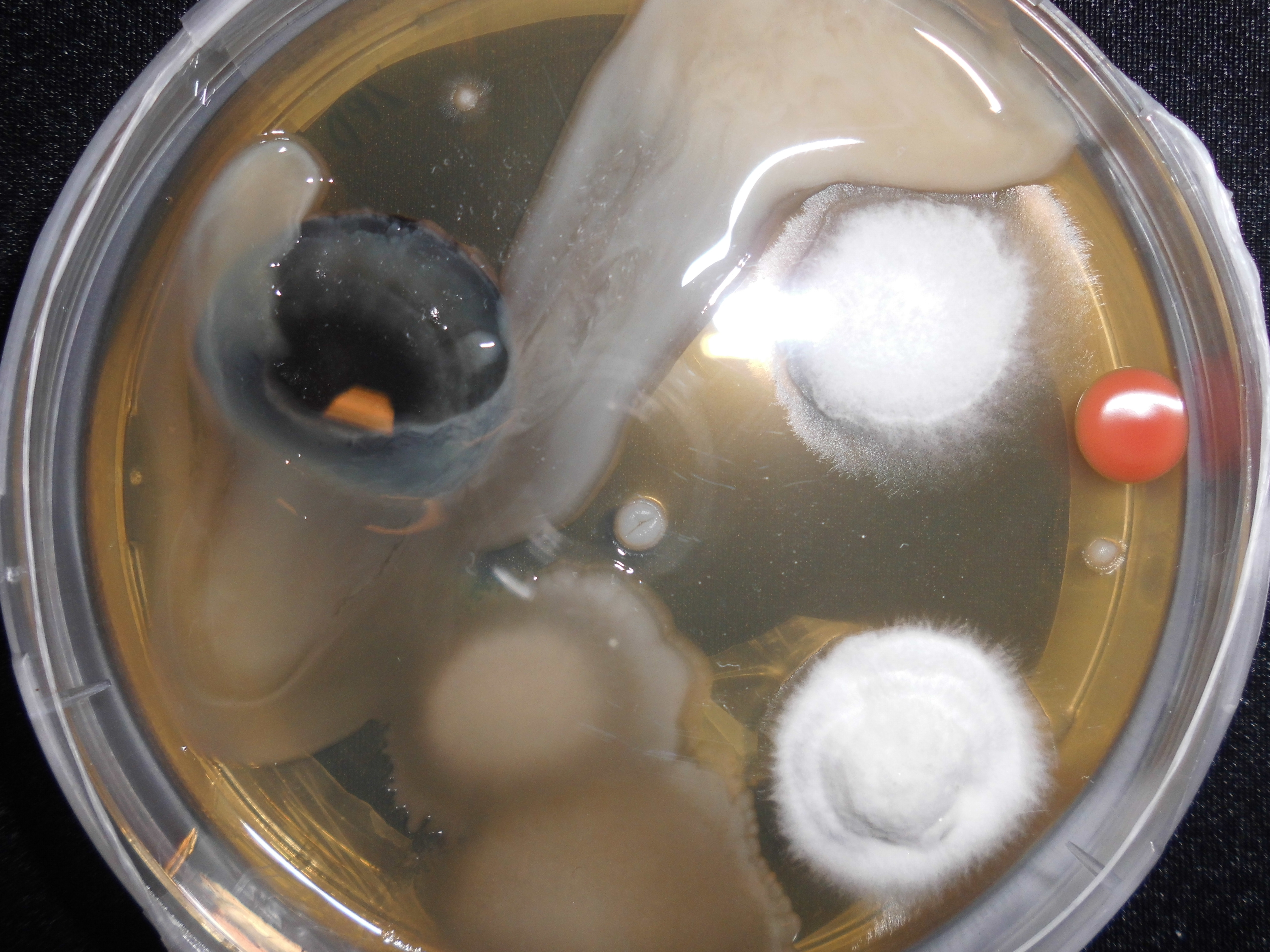|
Aircraft Recycling
Aircraft recycling is the process of scrapping and disassembling retired aircraft, and re-purposing their parts as spare parts or scrap. Airplanes are made of around 800 to 1000 parts that can be recycled, with the majority of them made from metal alloys and composite materials. The two most common metal alloys are aluminum and titanium and the main composite material is carbon fiber. Airplanes are disassembled at aircraft-recycling centers where non-metal components with no recycle value are discarded, major components are dismantled and metal alloy components are sorted based on their composition. The metal alloys are then remelted together to form a single homogenous alloy from scraps. It is estimated that roughly 400-450 airplanes are disassembled and recycled annually which drives the $2 billion aircraft parts market. The main challenge in aircraft recycling is ensuring that the amount of metal impurities within recycled aircraft material is low so that they can be reused in ... [...More Info...] [...Related Items...] OR: [Wikipedia] [Google] [Baidu] |
Airbus A310-304 'CS-TKI' (13611108175)
Airbus SE ( ; ; ; ) is a Pan-European aerospace corporation. The company's primary business is the design and manufacturing of commercial aircraft but it also has separate Airbus Defence and Space, defence and space and Airbus Helicopters, helicopter divisions. Airbus has long been the world's leading helicopter manufacturer and, in 2019, also emerged as the world's biggest manufacturer of airliners. The company was incorporated as the European Aeronautic Defence and Space Company (EADS) in the year 2000 through the merger of the French Aérospatiale-Matra, the German DASA and Spanish EADS CASA, CASA. The new entity subsequently acquired full ownership of its subsidiary, ''Airbus Industrie GIE'', a joint venture of European aerospace companies originally incorporated in 1970 to develop and produce Airbus A300, a wide-body aircraft to compete with American-built airliners. EADS rebranded itself as ''Airbus SE'' in 2015. Reflecting its multinational origin, the company operates ... [...More Info...] [...Related Items...] OR: [Wikipedia] [Google] [Baidu] |
Composite Material
A composite or composite material (also composition material) is a material which is produced from two or more constituent materials. These constituent materials have notably dissimilar chemical or physical properties and are merged to create a material with properties unlike the individual elements. Within the finished structure, the individual elements remain separate and distinct, distinguishing composites from mixtures and solid solutions. Composite materials with more than one distinct layer are called ''composite laminates''. Typical engineered composite materials are made up of a binding agent forming the ''matrix'' and a Filler (materials), filler material (particulates or fibres) giving ''substance'', e.g.: * Concrete, reinforced concrete and masonry with cement, lime or Mortar (masonry), mortar (which is itself a composite material) as a binder * Composite wood such as glulam and plywood with wood glue as a binder * Reinforced plastics, such as fiberglass and fibre-rein ... [...More Info...] [...Related Items...] OR: [Wikipedia] [Google] [Baidu] |
Natural Rubber
Rubber, also called India rubber, latex, Amazonian rubber, ''caucho'', or ''caoutchouc'', as initially produced, consists of polymers of the organic compound isoprene, with minor impurities of other organic compounds. Types of polyisoprene that are used as natural rubbers are classified as elastomers. Currently, rubber is harvested mainly in the form of the latex from the Hevea brasiliensis, Pará rubber tree (''Hevea brasiliensis'') or others. The latex is a sticky, milky and white colloid drawn off by making incisions in the bark and collecting the fluid in vessels in a process called "tapping". Manufacturers refine this latex into the rubber that is ready for commercial processing. Natural rubber is used extensively in many applications and products, either alone or in combination with other materials. In most of its useful forms, it has a large stretch ratio and high resilience and also is buoyant and water-proof. Industrial demand for rubber-like materials began to out ... [...More Info...] [...Related Items...] OR: [Wikipedia] [Google] [Baidu] |
Flame Retardant
Flame retardants are a diverse group of chemicals that are added to manufactured materials, such as plastics and textiles, and surface finishes and coatings. Flame retardants are activated by the presence of an combustion, ignition source and prevent or slow the further development of flames by a variety of different physical and chemical mechanisms. They may be added as a copolymer during the polymerisation process, or later added to the polymer at a moulding or extrusion process or (particularly for textiles) applied as a topical finish. Mineral flame retardants are typically additive, while organohalogen and organophosphorus compounds can be either reactive or additive. Classes Both reactive and additive flame retardants types can be further separated into four distinct classes: * Minerals such as aluminium hydroxide (ATH), magnesium hydroxide (MDH), huntite and hydromagnesite, various hydrates, red phosphorus, and boron compounds, mostly borates. * Organohalogen compounds. Th ... [...More Info...] [...Related Items...] OR: [Wikipedia] [Google] [Baidu] |
Contamination
Contamination is the presence of a constituent, impurity, or some other undesirable element that renders something unsuitable, unfit or harmful for the physical body, natural environment, workplace, etc. Types of contamination Within the sciences, the word "contamination" can take on a variety of subtle differences in meaning, whether the contaminant is a solid or a liquid, as well as the variance of environment the contaminant is found to be in. A contaminant may even be more abstract, as in the case of an unwanted energy source that may interfere with a process. The following represent examples of different types of contamination based on these and other variances. Chemical contamination In chemistry, the term "contamination" usually describes a single constituent, but in specialized fields the term can also mean chemical mixtures, even up to the level of cellular materials. All chemicals contain some level of impurity. Contamination may be recognized or not and may become a ... [...More Info...] [...Related Items...] OR: [Wikipedia] [Google] [Baidu] |
Toughness
In materials science and metallurgy, toughness is the ability of a material to absorb energy and plastically deform without fracturing."Toughness" Brian Larson, editor, 2001–2011, The Collaboration for NDT Education, Iowa State University [...More Info...] [...Related Items...] OR: [Wikipedia] [Google] [Baidu] |
Electronic Waste
Electronic waste (or e-waste) describes discarded electrical or electronics, electronic devices. It is also commonly known as waste electrical and electronic equipment (WEEE) or end-of-life (EOL) electronics. Used electronics which are destined for refurbishment, reuse, resale, salvage recycling through material recovery, or disposal are also considered e-waste. Informal processing of e-waste in developing country, developing countries can lead to adverse effect, adverse human health effects and environmental pollution. The growing consumption of electronic goods due to the Digital Revolution and innovations in science and technology studies, science and technology, such as bitcoin, has led to a global e-waste problem and hazard. The rapid exponential increase of e-waste is due to frequent new model releases and unnecessary purchases of electrical and electronic equipment (EEE), short innovation cycles and low recycling rates, and a drop in the average life span of computers. El ... [...More Info...] [...Related Items...] OR: [Wikipedia] [Google] [Baidu] |
Steel
Steel is an alloy of iron and carbon that demonstrates improved mechanical properties compared to the pure form of iron. Due to steel's high Young's modulus, elastic modulus, Yield (engineering), yield strength, Fracture, fracture strength and low raw material cost, steel is one of the most commonly manufactured materials in the world. Steel is used in structures (as concrete Rebar, reinforcing rods), in Bridge, bridges, infrastructure, Tool, tools, Ship, ships, Train, trains, Car, cars, Bicycle, bicycles, Machine, machines, Home appliance, electrical appliances, furniture, and Weapon, weapons. Iron is always the main element in steel, but other elements are used to produce various grades of steel demonstrating altered material, mechanical, and microstructural properties. Stainless steels, for example, typically contain 18% chromium and exhibit improved corrosion and Redox, oxidation resistance versus its carbon steel counterpart. Under atmospheric pressures, steels generally ... [...More Info...] [...Related Items...] OR: [Wikipedia] [Google] [Baidu] |
Recycling
Recycling is the process of converting waste materials into new materials and objects. This concept often includes the recovery of energy from waste materials. The recyclability of a material depends on its ability to reacquire the properties it had in its original state. It is an alternative to "conventional" waste disposal that can save material and help lower greenhouse gas emissions. It can also prevent the waste of potentially useful materials and reduce the consumption of fresh raw materials, reducing energy use, air pollution (from incineration) and water pollution (from landfilling). Recycling is a key component of modern waste reduction and represents the third step in the "Reduce, Reuse, and Recycle" waste hierarchy, contributing to environmental sustainability and resource conservation. It promotes environmental sustainability by removing raw material input and redirecting waste output in the economic system. There are some ISO standards related to recycling, su ... [...More Info...] [...Related Items...] OR: [Wikipedia] [Google] [Baidu] |
Chemical Composition
A chemical composition specifies the identity, arrangement, and ratio of the chemical elements making up a compound by way of chemical and atomic bonds. Chemical formulas can be used to describe the relative amounts of elements present in a compound. For example, the chemical formula for water is H2O: this means that each molecule of water is constituted by 2 atoms of hydrogen (H) and 1 atom of oxygen (O). The chemical composition of water may be interpreted as a 2:1 ratio of hydrogen atoms to oxygen atoms. Different types of chemical formulas are used to convey composition information, such as an empirical or molecular formula. Nomenclature can be used to express not only the elements present in a compound but their arrangement within the molecules of the compound. In this way, compounds will have unique names which can describe their elemental composition. Composite mixture The chemical composition of a mixture can be defined as the distribution of the individual substance ... [...More Info...] [...Related Items...] OR: [Wikipedia] [Google] [Baidu] |
Evacuation Slide
An evacuation slide is an inflatable slide used to evacuate an aircraft quickly. An escape slide is required on all commercial (passenger carrying) aircraft where the door sill height is such that, in the event of an evacuation, passengers would be unable to step down from the door uninjured (Federal Aviation Administration requires slides on all aircraft doors where the floor is or more above the ground). Escape slides are packed and held within the door structure inside the ''slide bustle'', a protruding part of the inside of an aircraft door that varies with aircraft size, door size and door location. In many modern planes, to reduce evacuation time, evacuation slides deploy automatically when a door is opened in an "armed" condition. Modern planes often indicate an armed condition with an indicator light. Regulations Federal Aviation Administration and EASA regulations require an approved method of escape on all aircraft exits where the floor is or more above the ground). ... [...More Info...] [...Related Items...] OR: [Wikipedia] [Google] [Baidu] |
Alloy
An alloy is a mixture of chemical elements of which in most cases at least one is a metal, metallic element, although it is also sometimes used for mixtures of elements; herein only metallic alloys are described. Metallic alloys often have properties that differ from those of the pure elements from which they are made. The vast majority of metals used for commercial purposes are alloyed to improve their properties or behavior, such as increased strength, hardness or corrosion resistance. Metals may also be alloyed to reduce their overall cost, for instance alloys of gold and Copper(II) sulfate, copper. A typical example of an alloy is SAE 304 stainless steel, 304 grade stainless steel which is commonly used for kitchen utensils, pans, knives and forks. Sometime also known as 18/8, it as an alloy consisting broadly of 74% iron, 18% chromium and 8% nickel. The chromium and nickel alloying elements add strength and hardness to the majority iron element, but their main function is ... [...More Info...] [...Related Items...] OR: [Wikipedia] [Google] [Baidu] |







